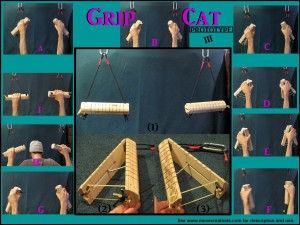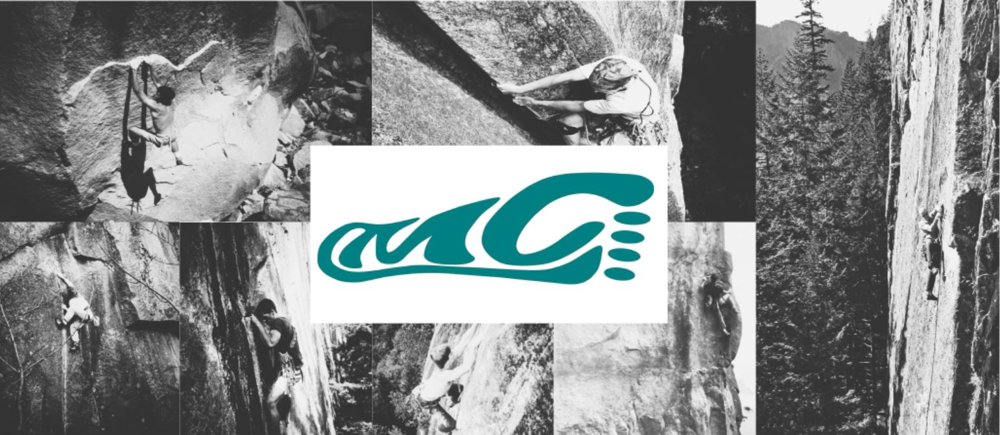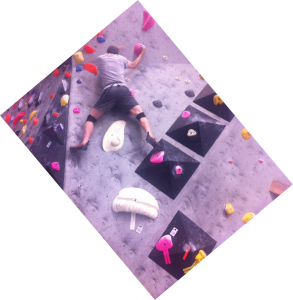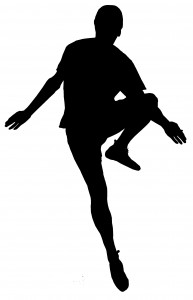The ability to grip with the hands is important not just for climbing, but for many sports and occupations. Most grip devices (e.g., spring loaded squeeze devices) are not functional; that is, they do not directly apply to gripping that one does in real life. Moreover, they do not have a clear way to progress to stronger grips. Enter the functional and progressive Grip Cat, now under prototype III:

By using it I’ve noticed is that grip ability can be developed quickly. Gripping involves not just strength, but a type of hand coordination. To work that hand coordination, you need functional training, as you get with this device.
The full-page pdf is here: Grip Cat III poster
The description and instructions are here: Grip Cat III routines and description (Also posted under the “Training Guides” menu.)



